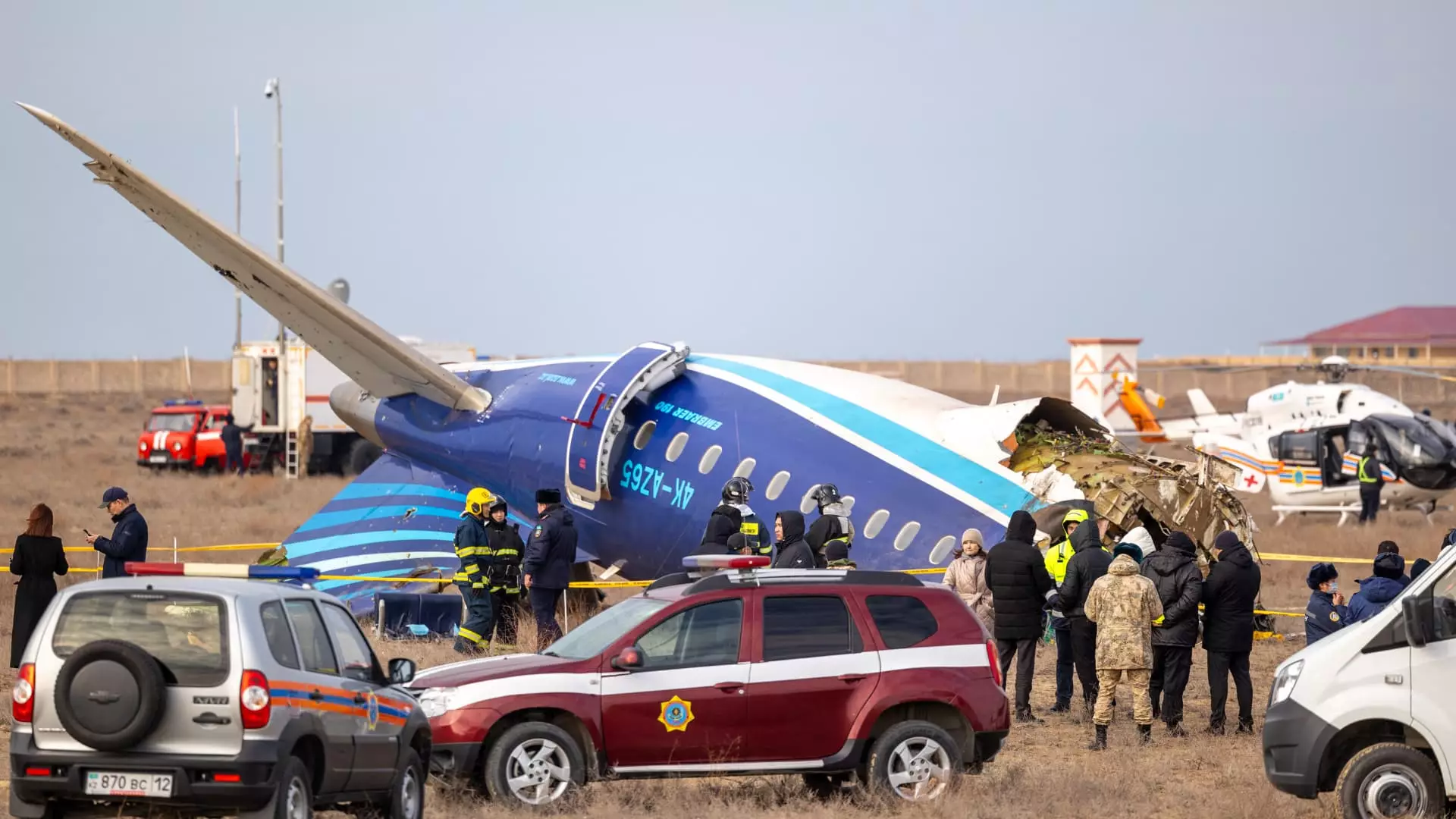On a tragic Wednesday, an Embraer passenger jet, en route from Azerbaijan to Russia, crashed off the coast of Kazakhstan, resulting in a significant loss of life and raising urgent questions surrounding aviation safety. The flight, designated J2-8243, was carrying 62 passengers along with five crew members when it deviated dramatically from its planned route and met a catastrophic end near the city of Aktau. According to reports, 32 survivors were rescued from the wreckage, but the situation remains deeply unsettling as investigations commence.
Preliminary reports suggest that the aircraft may have encountered a bird strike while in flight, subsequently prompting the crew to initiate an emergency landing. The aircraft attempted to divert to an alternate airfield, which ultimately led it to crash approximately three kilometers from Aktau’s shoreline. The image of the plane descending quickly and bursting into flames is harrowing, and footage showcases passengers emerging bloodied and disoriented from what remained of the fuselage. Such visuals not only highlight the immediate human toll but also underscore a larger issue regarding the safety protocols in place for commercial flights.
The Kazakh authorities reported a substantial emergency response, with fire services quickly extinguishing the flames to aid the recovery efforts of both survivors and victims. Nonetheless, eyewitness accounts and video evidence reveal a scene of chaos, emphasizing the fragility of human life in the face of such tragic incidents.
While investigations are ongoing, the Russian aviation authority cited a potential collision with birds as a cause. Given that the plane reportedly flew hundreds of miles off-course before its crash, it raises questions about the decision-making processes employed by the flight crew during the emergency. Additionally, the proximity of the incident to recent drone strikes in southern Russia cannot be ignored. Such geopolitical tensions may have contributed to disruptions in air traffic, including the closure of the nearest airport in Russia that morning—a crucial detail that begs further examination.
It is particularly concerning that commercial aviation tracking systems lost sight of the flight right before its ill-fated descent. The public is left wondering about the robustness of the tracking technologies and how they can be improved to better safeguard aviation.
Condolences and International Reactions
The tragedy swiftly garnered responses from international leaders, with condolences expressed by both Russian President Vladimir Putin and Azerbaijan President Ilham Aliyev. Their messages not only underscore the event’s seriousness but also highlight the interconnectedness of nations, especially in times of crisis. Furthermore, President Aliyev’s decision to return to Azerbaijan from a scheduled summit reflects the gravity of the situation, marking the crash as a priority that transcends typical diplomatic engagements.
The response from Ramzan Kadyrov, the leader of Chechnya, further illustrates the human impact of the incident, especially as reports emerged indicating that some patients were in critical condition. The emotional toll of such a disaster cannot be understated, as communities and families grapple with the repercussions of loss.
The Kazakh government has announced the formation of a commission to investigate the crash, taking steps to secure assistance for the victims’ families. This commitment to transparency and accountability is vital, as it reflects an awareness of the need to learn from such tragedies in order to enhance aviation safety standards. Cooperation between Kazakhstan and Azerbaijan during the investigation is a positive step towards understanding the full scope of the incident, which could potentially lead to crucial reforms in safety protocols.
Ultimately, this aviation disaster serves as a heartbreaking reminder of the potential vulnerabilities within the industry. It raises essential questions about safety measures, the complexities of navigating geopolitical tensions, and the human experience in the realm of air travel. Moving forward, there is an imperative need for improved systems, training, and protocols to ensure that such a tragedy is not repeated, safeguarding future flights and fostering greater public trust in air travel.

